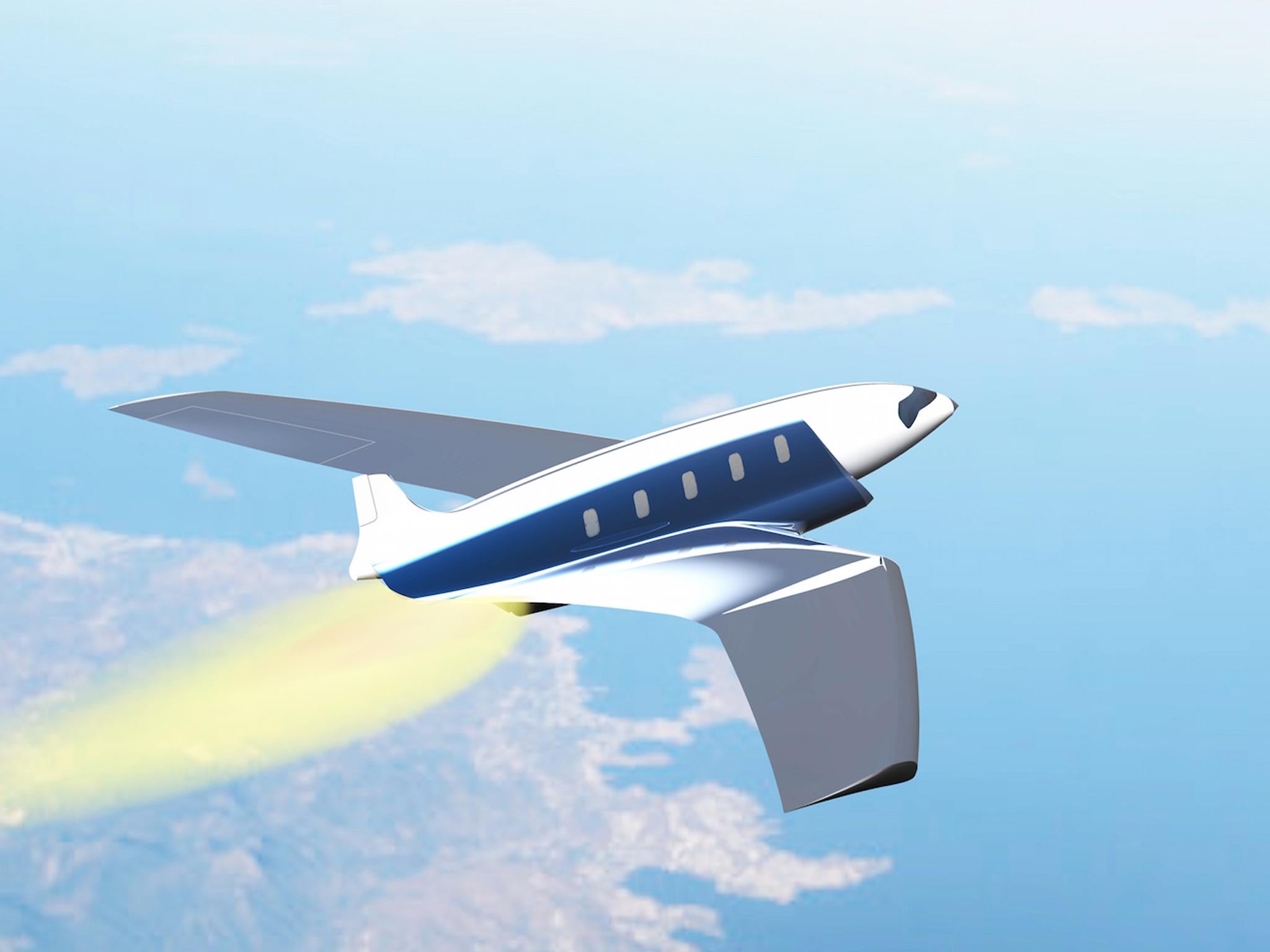‘Antipode’ plane could blast from London to New York in 20 minutes, creator claims
New design uses futuristic technology to massively cut flying times

A next-generation plane could get passengers from London to New York in just 20 minutes, its creator has suggested.
The idea for the jet, called the Antipode, came from Canadian designer Charles Bombardier.
His design would see a new technique called “long penetration mode” used to help the plane reach speeds many times faster than current jets are capable of.
The jet would seat ten passengers and take off from a normal airport runway. It would then apparently use rocket boosters to climb to 40,000 feet and then deploy its “supersonic combustion ramjet engine” to reach speeds of Mach 24 – ten times faster than Concorde and 21 times the speed of sound.
It would be able to fly at close to 16,000 miles per hour, compared to a normal Boeing 747 jet’s top speed of 570 miles per hour.
The Antipode could complete a circuit of the whole globe in less than the time taken to watch a football match.
Mr Bombardier told the BBC: “The idea of going from New York to London in, say 20 minutes – that's what I think really grabbed people."
“It's always something that people would like – a transportation system that could take you from one place on the planet to the other side.”
The Antipode design is based on an earlier concept, the Skreemr, which Mr Bombardier published but that would likely have suffered from over-heating problems and excessive noise caused by its incredible speeds.
Can 'son of Concorde' succeed?
Show all 3After publishing the design he was contacted by Joseph Hazeltine, an engineer with the company Wyle, which works with Nasa and the US Defense Department.
Mr Hazeltine suggested incorporating the "long penetration mode" technique that Nasa recently tested. This would involve air channels in the plane being used to cool the jet’s surfaces and reduce the noise of the sonic boom produced when the plane breaks the sound barrier. It would allow the Antipode to handle the intense heat created by an object moving so quickly.
The rocket boosters used to help the plane reach altitude would be ditched at 40,000 feet and would then fly back to the airport to be reused.
Each plane would have a set of emergency boosters to help slow it down and to provide enough thrust to allow it to attempt a second landing should the first landing, which involves gliding down using the wings, fail.
The prospect of a lunch-hour trip across the Atlantic remains on hold for now, however, as Mr Bombardier admits that the Antipode is currently little more than an idea, designed to provoke discussion.
He said: “In the end it’s not a practical idea – it’s a concept”.
"I know that it's not going to lead to the exact aircraft at the end, but it might help to develop new technologies and new processes. If it does, then that I'm happy that I did something to help society."
Click here to view US tours and holidays, with Independent Holidays.
Subscribe to Independent Premium to bookmark this article
Want to bookmark your favourite articles and stories to read or reference later? Start your Independent Premium subscription today.

Join our commenting forum
Join thought-provoking conversations, follow other Independent readers and see their replies